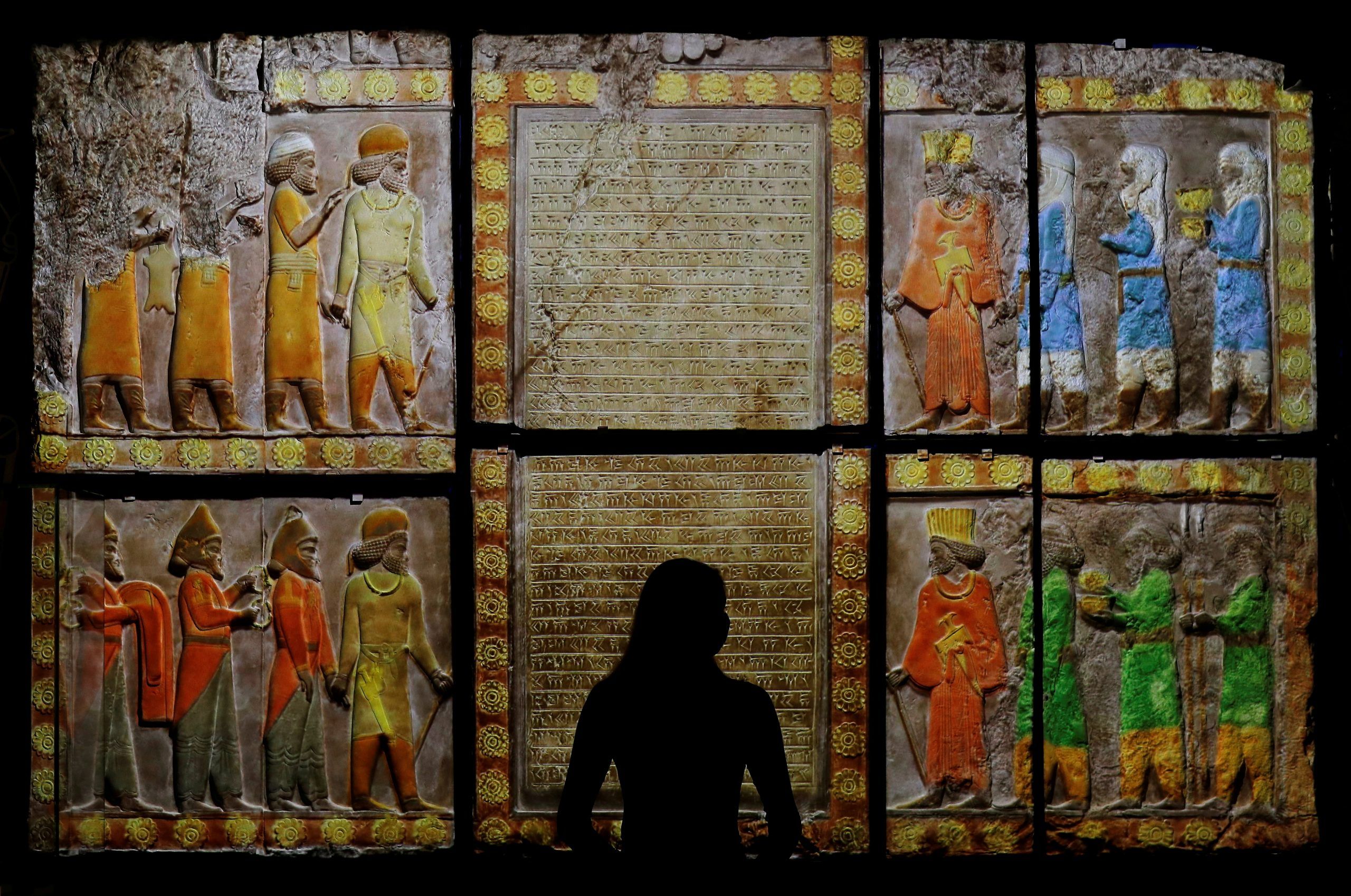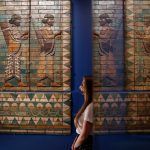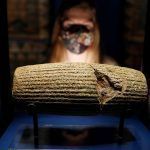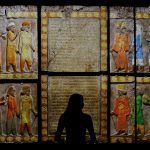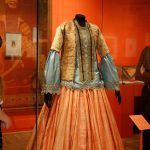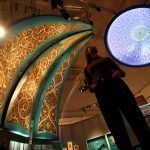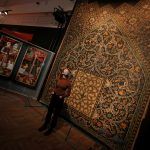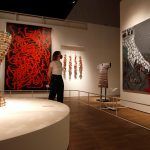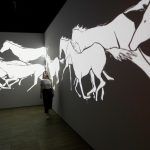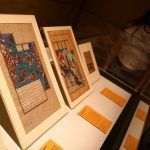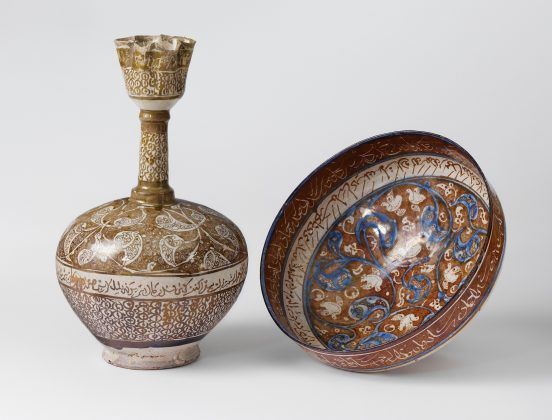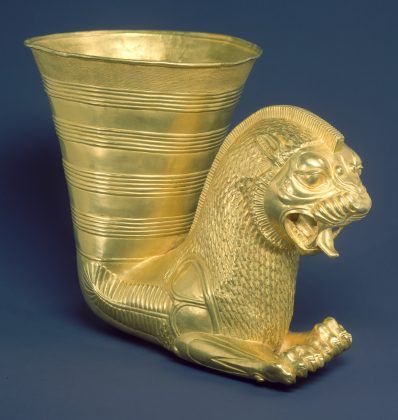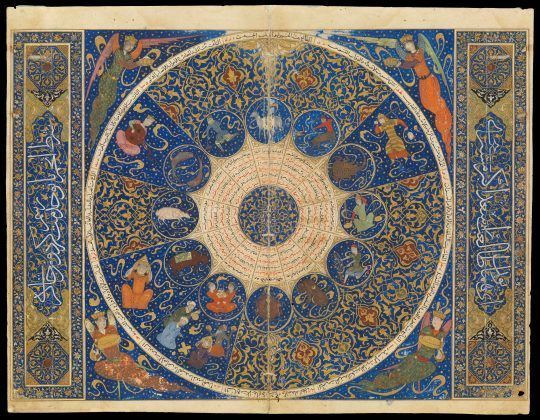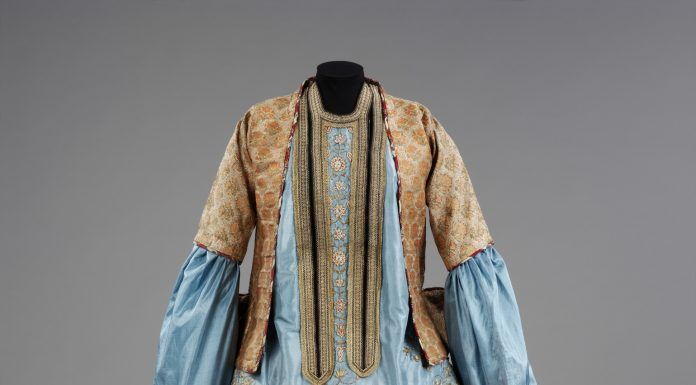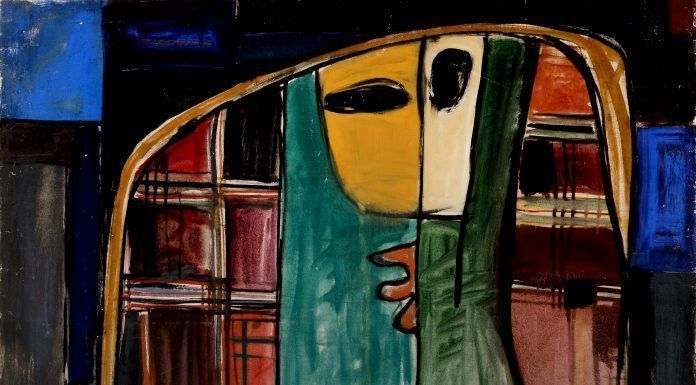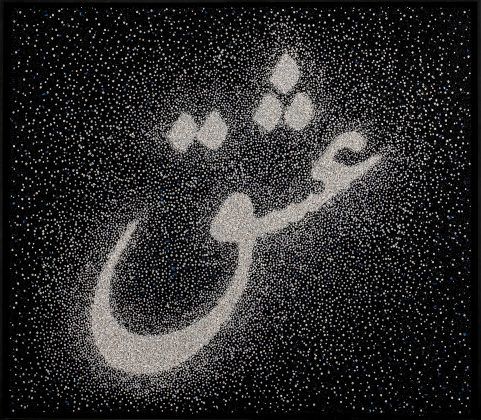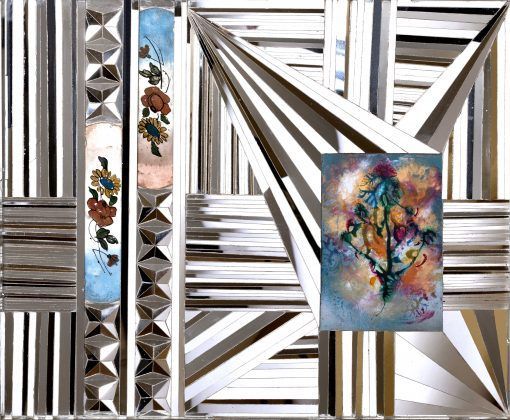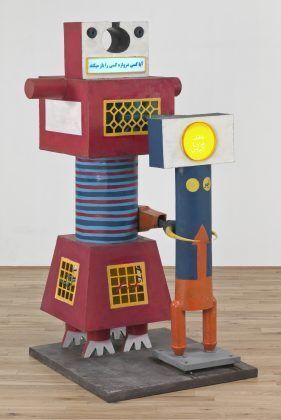By Nazanine Nouri
The Victoria & Albert Museum in London — the world’s leading museum of art and design — is hosting the U.K.’s biggest exhibition of Iranian art, design and heritage in nearly a century: “Epic Iran.” The V&A was in extensive discussions to borrow works from the National Museum of Iran, but in the end, no objects came from Iran.
[aesop_image img=”https://kayhanlife.com/wp-content/uploads/2019/07/2007-02-22T120000Z_1246164278_GM1DURCDHSAA_RTRMADP_3_BRITAIN.jpg” panorama=”off” credit=”The main entrance of the Victoria and Albert Museum is seen in London February 19, 2007. REUTERS/Alessia Pierdomenico” align=”center” lightbox=”on” captionsrc=”custom” captionposition=”left” revealfx=”off” overlay_revealfx=”off”]
Epic Iran presents 5,000 years of Iranian art, design and culture — from 3,000 BC to the present day. It was originally scheduled to open at the V&A on February 13th, but was postponed because of the Coronavirus epidemic.
The objects that were due to travel from Iran were mostly artefacts from 3,000 BC that had been newly discovered in Eastern Iran and that would have enriched the exhibition’s opening section.
“This exhibition offers a rare opportunity to look at Iran as a single civilization over 5,000 years,” said Tim Stanley, co-curator of Epic Iran and a specialist in Islamic art. “Objects and expertise have come together to tell one of the world’s great stories in art, design and culture.”
The V&A is the world’s largest museum of applied and decorative arts and design as well as sculpture. It houses a permanent collection of more than 2.3 million objects that span more than 5,000 years of human creativity. Founded in 1852 and named after Queen Victoria and her husband Prince Albert, the museum has been collecting the art of Iran since its founding, and has one of the world’s leading collections of Iranian art from the medieval and modern periods.
Organized by the V&A with the Iran Heritage Foundation in association with The Sarikhani Collection, the exhibition features treasures from the past and present, illustrating Iran’s rich contribution to international culture.
“Iran was home to one of the great historic civilizations, yet its monumental artistic achievements remain unknown to many,” said the V&A. “The exhibition will offer a fresh perspective on a country that is so often seen through a different lens in the news.”
Epic Iran brings together 350 objects from ancient, Islamic and contemporary Iran, including rarely seen objects dating back to 3,200 BC. They will be drawn from the V&A collection and borrowed from the US, Russia, France, and Belgium, as well as from private collections such as The Sarikhani Collection.
Ranging from sculptures, ceramics, and carpets to textiles, photography and film, the displays “will reflect the country’s vibrant historic culture, architectural splendors, the abundance of myth, poetry and tradition that have been central to Iranian identity for millennia and the evolving, self-renewing culture evident today,” according to the V&A.
The last such exhibition to be held in the U.K. — “The International Exhibition of Persian Art” — took place at the Royal Academy of Arts in London in 1931 with the support of the government of Reza Shah Pahlavi, and featured more than 2,000 objects.
Epic Iran will “unite the ancient and Islamic study of Iran – often seen as two separate disciplines – alongside a powerful modern and contemporary section,” said V&A Director Tristram Hunt in the exhibition catalogue, “allowing the Iranian people’s artistic achievements across millennia to be considered in their entirety.”
The first section introduces the Land of Iran with its dramatic and varied landscapes, its mountain ranges, vast deserts and salt pans, lush forests and varied coastlines.
The next section, Emerging Iran, presents the earliest known writing and shows that Iran’s rich civilization rivalled those of Egypt and Mesopotamia, even before the rise of the Persian Empire. “It will be clear that the Persian Empire, founded in 550 BC, inherited a very rich legacy from the earlier periods of Iranian history,” said John Curtis, Epic Iran’s co-curator.
The Persian Empire will cover the Achaemenid period, and start in 550 BC with the crowning of Cyrus the Great, which united Iran politically for the first time. Highlights will include the Cyrus Cylinder – on loan from the British Museum – referred to by some as a kind of ‘charter of human rights’.
The fourth section, Last of the Ancient Empires, covers a period of dynastic change with Alexander the Great’s overthrow of the Persian Empire in 331 BC. It focuses on the dynasties that follow: the Parthians and the Sasanians, whose 400 years of stable reign corresponds to the time when Zoroastrianism becomes the state faith.
The Book of Kings gallery opens the section on Islamic Iran and how it was understood in later centuries primarily through the Shahnameh, or Book of Kings. The Shahnameh is the world’s greatest epic poem, completed by the poet Ferdowsi around 1010 A.D. Epic Iran presents a series of elaborate illustrated manuscripts and folios depicting scenes from the Shahnameh — from the British Library and the Sarikhani Collection.
[aesop_image img=”https://kayhanlife.com/wp-content/uploads/2021/01/Qaran-Unhorses-Barman-a-folio-from-the-Shahnameh-of-Shah-Tahmasp-about-1523–35.-I.MS_.4025.-Photo-©-The-Sarikhani-Collection-1-scaled.jpg” panorama=”off” credit=”Qaran Unhorses Barman, a folio from the Shahnameh of Shah Tahmasp, about 1523–35. I.MS.4025. Photo © The Sarikhani Collection” align=”center” lightbox=”on” captionsrc=”custom” captionposition=”left” revealfx=”off” overlay_revealfx=”off”]
Change of Faith explores the place of Islam in Iranian culture following the Arab conquest in the mid-7th Century AD. It features a number of exquisite Qur’ans and manuscript illuminations as well as the magnificent Horoscope of Iskandar Sultan, on loan from the Wellcome Collection.
Literary Excellence reveals how Persian written in the Arabic script emerged as a literary language in the royal courts of eastern Iran from the 10th Century AD, with incredibly refined manuscripts and poetry which became part of the visual arts because of the use of poetic inscriptions on ceramics, metalwork and even carpets.
Royal Patronage is a spectacular exploration — featuring rich material from the 13th century AD onwards — of the re-emergence of ideas of kingship after Islam. Three 10-meter-long paintings replicating tilework patterns from Isfahan’s domes are suspended in arcs from the ceiling, and an Augmented Reality projection to recreate the appearance of a full dome. Royal Patronage will also feature the Buccleuch Sanguszko Carpet, and two oil paintings loaned by Her Majesty the Queen from the Royal Collection.
The Old and the New explores how the Qajar dynasty looked back to their predecessors to legitimize their power, while seeking to modernize and develop new relationships with Europe. It focuses on the introduction of photography in Iran in the mid-1800s which had a profound effect on the way Iranians represented themselves.
The final section, Modern and Contemporary , covers a period of great social and political change in Iran from the 1940s to the present day. Works by Sirak Melkonian, Parviz Tanavoli, Monir Shahroudy Farmanfarmaian, and Bahman Mohasses will showcase the flourishing of modern art until the dramatic events of the 1979 Revolution and the Iran-Iraq War.
The cultural scene came alive again in the 1990s, so contemporary Iranian art is represented with works by Farhad Moshiri, Avish Khebrezadeh, Ali Banisadr, Shadi Ghadirian, Hossein Valamanesh, Shirin Neshat, Shirin Aliabadi, Shirazeh Houshiary and YZ Kami.
“Contemporary Iranian art is dynamic and exciting, critically self-examining and engaged in the global world, and both intellectual and playful,” said Ina Sarikhani Sandmann, the associate curator of Epic Iran.
The Iran Heritage Foundation is an independent, non-political, registered UK charity that was set up in 1990 with the mission to promote the cultural heritage of Iran. The IHF was responsible for organizing or sponsoring the following UK exhibitions: Royal Persian Paintings: the Qajar Epoch 1785-1925 at the Brunei Gallery in SOAS (1999); Iranian Contemporary Art at the Barbican Centre (2001); Forgotten Empire: the World of Ancient Persia (2005-6) and Shah Abbas: The Remaking of Iran (2009) at the British Museum.
In 2013, the IHF initiated and organized a five-city U.S. tour of the Cyrus Cylinder and the Oxus Treasure, on loan from the British Museum.
The Sarikhani Collection is a body of 1,000 works of art from Iran from the 3rd millennium BC to the 18th century, including silverware, paintings, textiles and ceramics housed in their own private museum in Henley, Oxfordshire.

